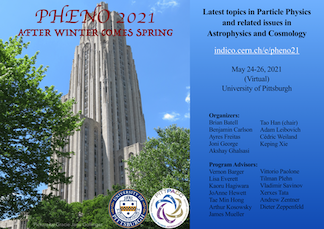Speaker
Description
Axion-like particles (ALPs) play an important role for inflationary model building, as well as are well motivated dark matter candidates. The out-of-equilibrium initial conditions, combined with their possibly nontrivial potentials, allow for a rich nonlinear dynamics of such fields in the early universe.
We consider the coherent oscillations of an ALP field in a wiggly potential and investigate the scenario when the fluctuations on top of the homogeneous field are amplified via parametric instabilities, leading to the complete fragmentation of the field. If the potential contains several local minima, separated by barriers, transitions between such minima can be induced via bubble nucleation. We investigate such transitions, taking into account the dynamical, nonthermal nature of the process and the impact of fragmentation. The above mentioned processes are accompanied by the production of a stochastic gravitational wave background, possibly within reach of future detectors.
